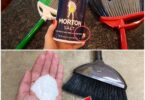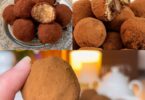2. The Fire Test:
Take a few grains of rice and hold them over a flame with a pair of tongs. Real rice will char and burn, emitting a toasted scent. In contrast, plastic rice will melt and possibly emit a plastic smell.
3. The Mortar and Pestle Test:
Crush a few grains with a mortar and pestle. Real rice should powder easily and feel gritty. On the other hand, plastic grains will not break down as easily and may have a more elastic texture.
4. The Boil Test:
Boil a small sample of rice and keep an eye on the water. If you notice a thick layer of unusual residue, it might be indicative of impurities. Real rice will have some starch that floats to the top, but it shouldn’t leave behind a significant residue.
5. The Mold Test:
Cook some rice and let it sit in a warm place for two or three days. If it’s real rice, it will mold. However, due to its inorganic nature, plastic rice will remain clear of mold.
Why It’s Important:
Eating plastic, obviously, poses serious health risks. In addition to protecting your health, ensuring the authenticity of rice guarantees that you’re consuming nutritionally beneficial grains.
Purchasing Tips:
To minimize risks, it’s advisable to buy rice from reputable sources such as trusted grocery stores or local markets. Familiar brands that adhere to food safety standards are less likely to sell adulterated products.
Conclusion:
While the idea of widespread plastic rice may be more of a myth than reality, knowing how to confirm the authenticity of your rice provides peace of mind. Use these simple tests to ensure that your rice is safe to eat. Enjoy your meals without worry, knowing that you’ve made informed choices for your well-being.
ADVERTISEMENT






